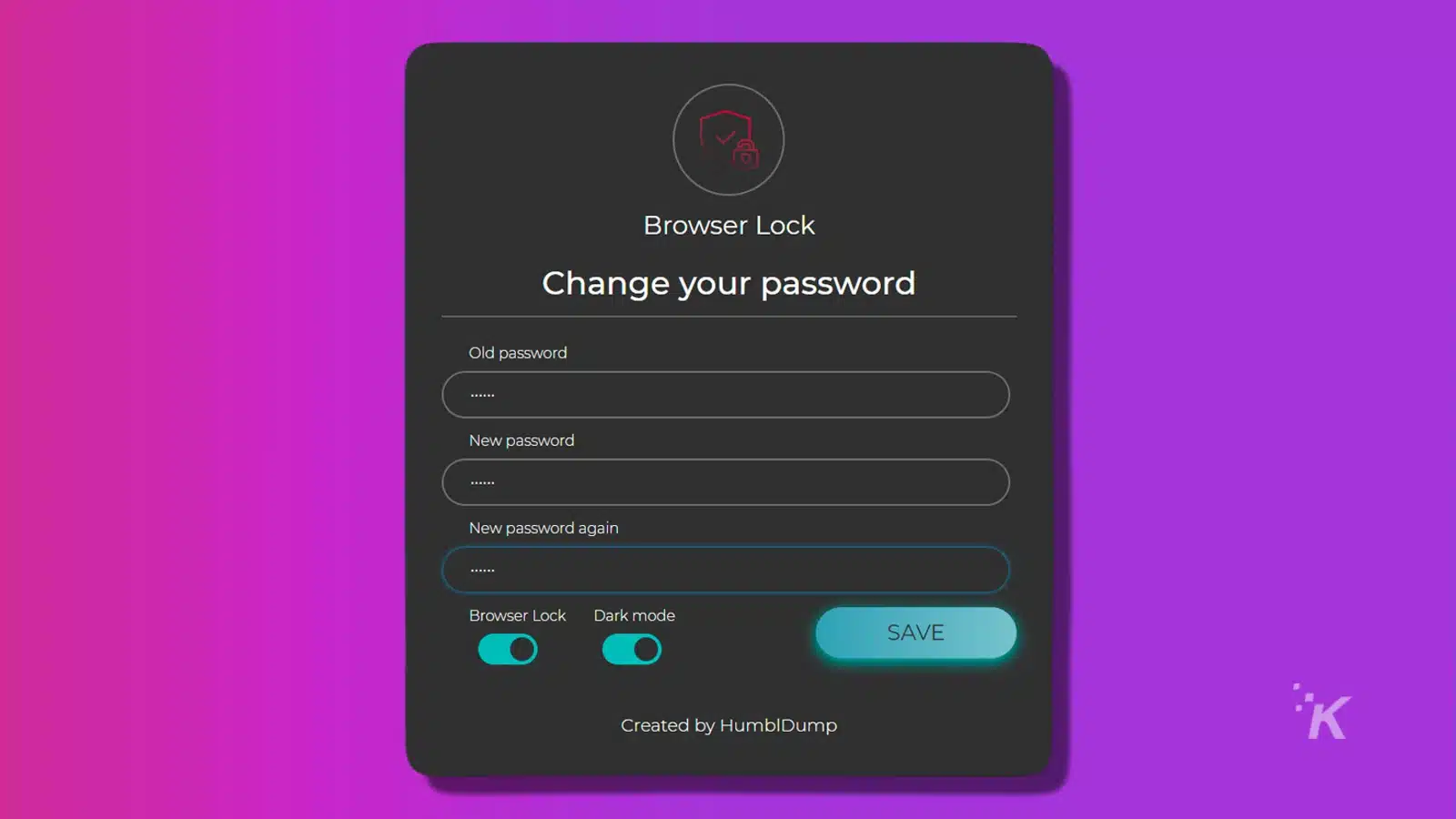How-To
How to secure your desktop browser with a password
Boost your privacy by locking down your browser with a password.

Just a heads up, if you buy something through our links, we may get a small share of the sale. It’s one of the ways we keep the lights on here. Click here for more.
Passwords are great for protecting your accounts. However, they can also be used to improve your desktop security.
By locking your browser with a password, you ensure that only you can access the websites you’ve bookmarked, accounts you’ve logged into, and other sensitive information, such as your internet browsing history.
Although most mainstream internet browsers do not offer a password lock feature, it is possible to use an extension to ensure that only you can use them.
Let’s look at how to apply a password lock to your browser.
Get the Browser Lock Extension

Internet browsers do not usually offer a password-lock feature. However, most of them support installing extensions.
The extension that we’re using today is Browser Lock, and it is available for Chrome, Microsoft Edge, and Opera. It is free to download and use on all three platforms.
Go to the download link for your browser, click on “Add to Chrome,” “Get,” or “Download now,” and the extension will automatically install on your device.
Once this is done, you will have to configure the new feature.
Configuring your new browser extension
The Browser Lock extension interface is similar regardless of what browser you use, and the menu is easy to understand.
First, you will have to create an account, using the new extension.
This can be done by simply clicking the new extension icon and going to “Settings.” Once you add your email address and set a password, you will be taken to the extension configuration screen.
Here, you can change your password, or enable one of five options:
- Browser Lock – This activates the main feature of the extension
- Deep Security – Locks the Login Screen of the browser if an incorrect password has been entered three times in a row. The Lockdown lasts for 3 minutes
- Dark Mode – Changes all extension-related menus to have dark backgrounds
- Password Recovery – Enables you to reset your password using your email address
- Clear History – Automatically deletes your browsing history after three failed login attempts

Locking your internet browser
Once the extension has been set up, you will be able to lock your browser. Two ways you can do this:
Via the extension icon:
- Pin the extension to your toolbar
- Click on the extension icon
- Press “Lock Browser”
Via contextual menu:
- Right-click anywhere on the screen to open the browser contextual menu
- Select the “Lock Browser” option
Unlocking your browser
To log back into your browser, simply reopen the application or maximize it and you will be presented with a log-in screen.
If you forget your password and need to reset it, you can do it by clicking on the menu icon located in the top-right corner of the screen and then pressing on “Recover your password.”
Bonus Tip: Password managers
Apple may have some impressive safeguards, but there’s no harm in investing in a password manager to keep your online accounts secure.
The best part? You don’t necessarily have to spend a dime. In fact, some of the best password managers out there are totally free of charge.
Check out our roundup of the best free password managers to finding one that works for you. Don’t feel like jumping pages? Honestly, we get it. Here’s one of our favorites from the list: NordPass.
 NordPass
NordPass
NordPass is our go-to choice for password management, it's sleek, user-friendly, and packs a punch when it comes to security.
- Zero-Knowledge Architecture: Ensures that your passwords and data are encrypted on your device before reaching their servers for ultimate privacy.
- User-Friendly Interface: Designed for ease of use, allowing quick access to stored passwords and personal information with minimal effort.
- Secure Password Sharing: Makes sharing passwords with family or colleagues safe and hassle-free, enhancing collaborative security practices.
- Data Breach Scanner: Regularly checks to see if your personal information has been exposed in a breach, offering proactive security measures.
An extra layer of security
Nowadays, browsers have decent levels of security regarding web-based malware and attacks. They encrypt passwords and financial data and protect your personal information.
However, using Browser Lock also protects you from unauthorized access to your browser.
While many extensions can help increase your privacy, this one is a must-have, especially if you often share your computer or use it in a public place.
Have any thoughts on this? Let us know down below in the comments or carry the discussion over to our Twitter or Facebook.
Editors’ Recommendations:
- If you own a Samsung phone – go back up your photos to another service right now
- How to turn off location services on your iPhone
- How to make all Signal messages disappear after a certain amount of time
- This Google Chrome extension can walk back Twitter’s recent design changes
Just a heads up, if you buy something through our links, we may get a small share of the sale. It’s one of the ways we keep the lights on here. Click here for more.































